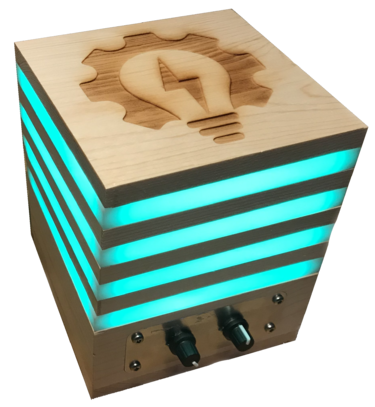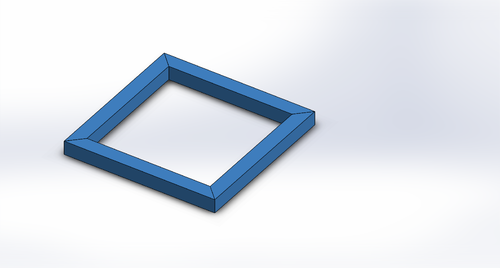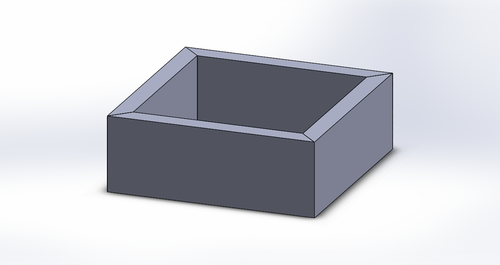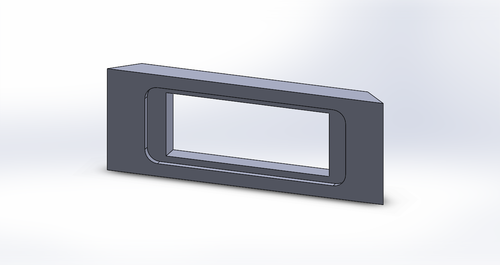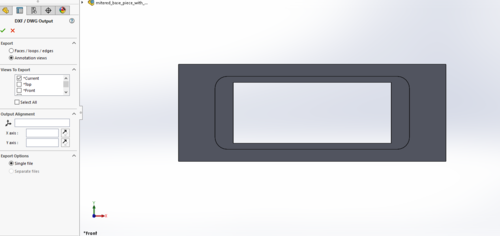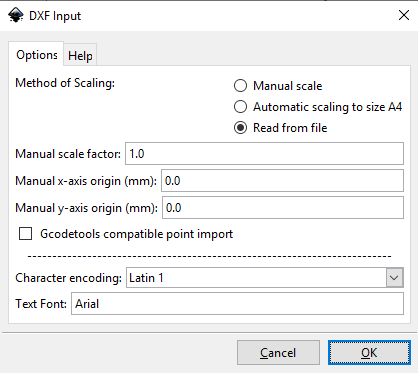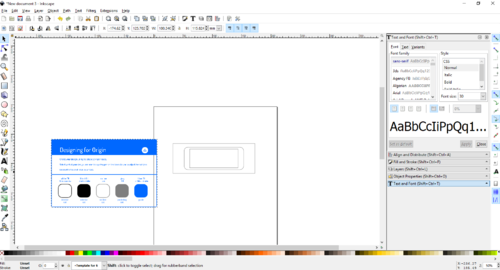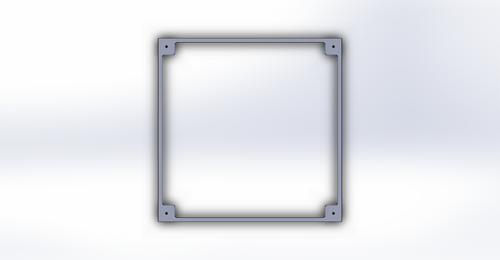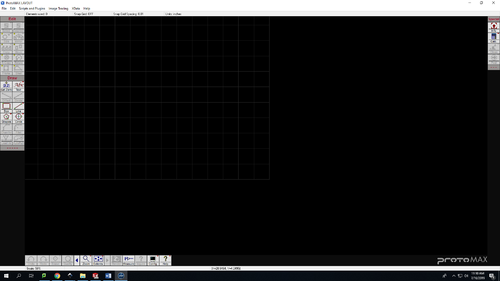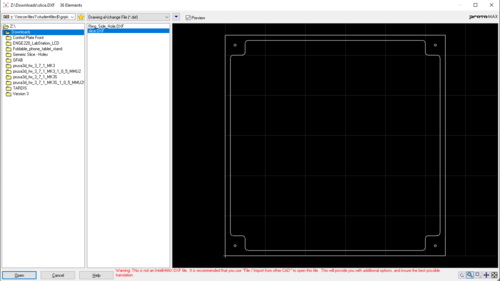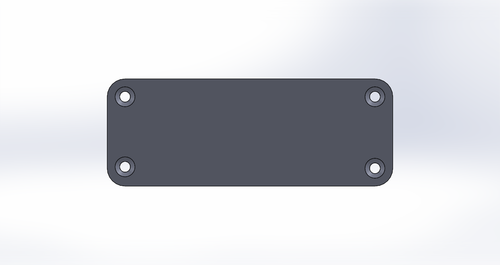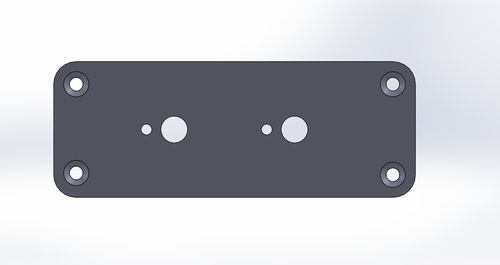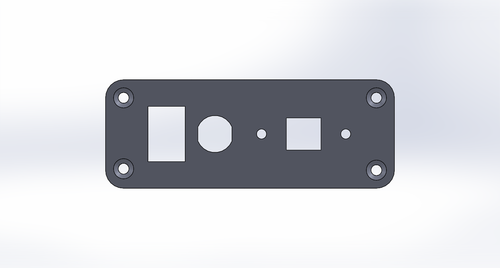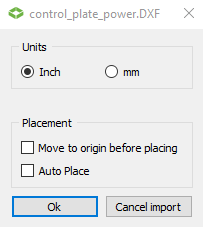Mood Lamp
In this TV, we will create a mood lamp. The lamp consists of an internal ...
Bill of Materials
Create the wooden "heels" and "slices"
I thought about calling this project the "light loaf" due to the terminology of heels and slices. The heels are the pieces that go on each end of the mood lamp. These are 5.5" square. The slices are made up of 4 mitered 1/2"x5.5" pieces glued together. You will need to create 2 heels and 3 slices. Additionally, you will need to create a base "slice" that will house the controls. This is made up of 4 mitered 2"x5.5" pieces.
Plane the board
You will begin with a 4'x8" board. As everything in the project is based on 1/2" pieces, you will need to initially plane the entire board down to 1/2" thickness
Cut the board
When planning on how to cut your board, you will want to make sure that the grain of the wood runs horizontally along the slices, allowing for maximum strength. One possible way to lay out your wood is given in the picture below. Always remember that you must allow for the kerf of the saw blade. On the table saw, this is generally 1/8".
For this scenario, you might want to do the following:
- Cut a 12" piece off of one end of the board. Rip this to 5.5", then cut 2 5.5" pieces from the remnant.
- Rip a 2" piece off of the length of the board.
- Rip 2 (or 3) 1/2" pieces off of the length of the board.
- Take these pieces that have been ripped, and then cut them into 5.5" strips.
- Miter each of these pieces.
Assemble the slices
- Assemble the 1/2" strips into 3 squares. Glue them up and clamp them in the Angle Strap Clamps.
Introduce yourself to Solidworks
Go to the Solidworks Training page and complete the recommended tutorials. This could take a couple of hours. As a demonstration that you understand the tutorial, design a slice in Solidworks. You can do this by designing the 1/2"x1/2"x5.5" mitered piece, then creating an assembly out of 4 of these. Call these mitered_slice_piece.SLDPRT and mitered_slice.SLDASM.
Assemble the base slice
Before assembling the base slice, we will need to cut holes for the controls, as well as an inset so that we can inlay aluminum control plates. Two of the base sides will be unaffected, but two will have the same hole/inset pattern. When the holes and inlays have been cut, the base can be glued and clamped just as the slices were above.
Design the slice in Solidworks
- Make a copy of the slice you designed. Copy both the assembly and the slice (technically, we only need the part file for the router, but we will go ahead and make the assembly so that we have a model of our entire system). Let's call these new files mitered_base_piece.SLDPRT and mitered_base.SLDASM. In the assembly, replace the old part with the new one. In the new part, change the height from .5" to 2".
- You will need to make another copy of the mitered_base_piece.SLDPRT. Let's call this mitered_base_piece_with_hole.SLDPRT.
- In this piece, add a rectangle hole in the center, 3.25" wide by 1.25" tall.
- Outside of this, add an inset that is 4" wide by 1.5" tall. This inset should be 1/8" deep. Make sure that the inset is on the outside (the long end) of your mitered part.
- Add a fillet to the inset that has a radius of 1/4".
- Replace a pair of opposite base pieces with the new base piece with hole. This should be your final base.
Prepare the design file for the router
- You will need to export the DXF of your single mitered_base_piece_with_hole.SLDPRT (not the assembly). Open up this file, and set the view so that you are looking at the front of the design (looking through the hole).
- Save this file as a DXF (Save As, then select the DXF format). If a window pops up asking you for a desired options to save the file, select the first one. The DXF window asks you which view to export. If you are already looking at the appropriate view (and you should be), select the "*Current" option and click the check to export the file. This will show you a render of your 2D DXF design. Click save.
- The router does not use DXF files, but it wants an SVG. So, open Inkscape and import this DXF file. If you are not familiar with Inkscape, this would be a good time to do the training on the Inkscape Training page. On the import, make sure that you have the "Method of Scaling" set to "Read from file".
- When you bring the file up in Inkscape, you will see that Solidworks has added some text to the drawing. Delete this text.
- We can choose to color code the design for the router. This isn't strictly necessary, as it can be done on the router. In fact, for something this simple, it will be just as easy to do this on the router. If you did want to color code it here, you could download the Shaper_Origin_Template.svg file and import it into your design. Move it off to the side. We will just be using it for color reference. Then color the different sections accordingly. To be honest, I am having trouble getting this to work correctly :)
- Save the svg of the design. This is what will be loaded by thy router.If you have an account on the Shaper Hub, then load your file there. To get an account, set it up on the router itself. There is presently (7/15/2019) not a way to add an account from a computer. If you do not have or cannot get an account, copy your file to a USB drive. This can be uploaded directly into the device.
Set up the work piece for the Handheld CNC Router
The Handheld CNC Router expects that it is viewing and routing on a solid surface in one plane. However, we have already cut out our mitered pieces. So, you will need to set up a 1/2" board with tape, and using some double-sided tape or other fastening mechanism, mount the piece to be routed at the bottom of the taped board. Be sure to place the outside of the part upward, so that you route the inset into the proper side. It is also a good idea to stick or mount some 1/2" blocks on either side to give the router a solid base when it is routing your part.
Set up the Handheld CNC Router
- Follow the directions given in the Handheld CNC Router Training to set up the router. We will want to use the 1/4" bit for this operation.
- Mark the interior rectangle as an "interior cut." This will tell the router to cut inside of this line. Mark the middle rounded rectangle as a pocketing cut. This will tell the router to take out everything within this area (this will give us the inset). Mark the outside rectangle as a "guide." The router will not route here, but this should map onto the outline of your piece.
Route the shelf
Perform the pocket cut 1/8" deep. This requires the initial pocket cut over the entire region, followed by an inside cut to clean up the pocket cut. The system automatically stays slightly off of the line during the pocket cut as the edge is not as clean when large amounts of wood are being removed. Hence, the inside cut to clean.
Route the hole
Perform the inside cut another 1/8" deep. The perform it again, another 1/4" deep. This should get through the entire 1/2" of the board.
Assemble the base
When both pieces have been routed, glue up and clamp your base as you did the slices.
Create the Acrylic Slices
Unlike the wooden pieces, the acrylic slices will be one solid piece. These slices are the same 5.5" square, but they look different on the inside. Each corner is a 1/2" square piece. This leave 4.5" in between them. This 4.5" span is connected by a 1/8" wide piece. Where the 1/8" wall joins the 1/2" corner, there is a 1/16" radius fillet. By thinning this piece, we will allow more light through the acrylic walls. We will also want to add a small 1/16" diameter hole in the center of each square. This will be used to help us center our drill when we add in the insets for the magnets.
Design the acrylic slice in Solidworks
There are likely many ways to do this. I have found the easiest is to make a simple 5.5" square, and then use lines to describe the cut pattern inside. To add the holes, add 1/32 wide radius (1/16 diameter) circles in the center of the square (dimension the center 1/4" away from each edge), and then use Linear Sketch Pattern to create the other 3 holes (or just do the hole 4 times).
Prepare the Omax Waterjet Software
Bring up the ProtoMAX Layout software.
In Solidworks, save your file as a DXF file. Open up this filein ProtoMAX. If you get a warning about this isn't an Intellimax file - ignore it. Feel good about yourself. You are beyond the system.
Cut the slices on the Waterjet
Create the control panels
The control panels are 4" wide and 1.5" high. They have 1/4" radius fillets at each corner. Inset 1/4" from each edge are 4 holes designed for #6 machine screws and have a diameter of .15". This means that the basic shape for both control plates looks like this:
Use Solidworks to design the front control panel
The front control panel houses the two potentiometer knobs. See the datasheet for a description of the panel layout. The potentiometer holes should be centered vertically on the panel and equally distributed horizontally. If you choose to not design the plate yourself, a Solidworks model is given here: Mood_Lamp_Front_Control_Plate.SLDPRT. It should look like this when completed.
Use Solidworks to design the rear control panel
The front control panel houses the power switch ( datasheet), powerjack ( datasheet), and USB port. These should all be centered vertically, but distributed aesthetically in the horizontal direction. The USB cable was purchased from | Amazon. The screw holes are 3.5mm diameter and the centers are 29.6 mm apart. In the middle is a 12.2mm square cutout for the USB plug. If you choose to not design the plate yourself, a Solidworks model is given here: Mood_Lamp_Rear_Control_Plate.SLDPRT. It should look like this when completed.
=== Prepare the job control file for the Metal Laser Cutter The Metal Laser Cutter uses the FabCreator software to create the job control file. Open up FabCreator, and import the DXF file that you want to create. Set the units according (inches in our case), and leave the placement boxes unchecked.
Etch the Logo on the top
3D Print the light stand
Program the Arduino
Test the Arduino IDE using standard programs
Program the Arduino to read in the A/D values
Verify using the printouts
Program the Arduino
Assemble the electronics
Solder together the screw shield
Solder the transistors onto the shield
Solder the solid-core connecting wires
=== Solder the
== Create the
